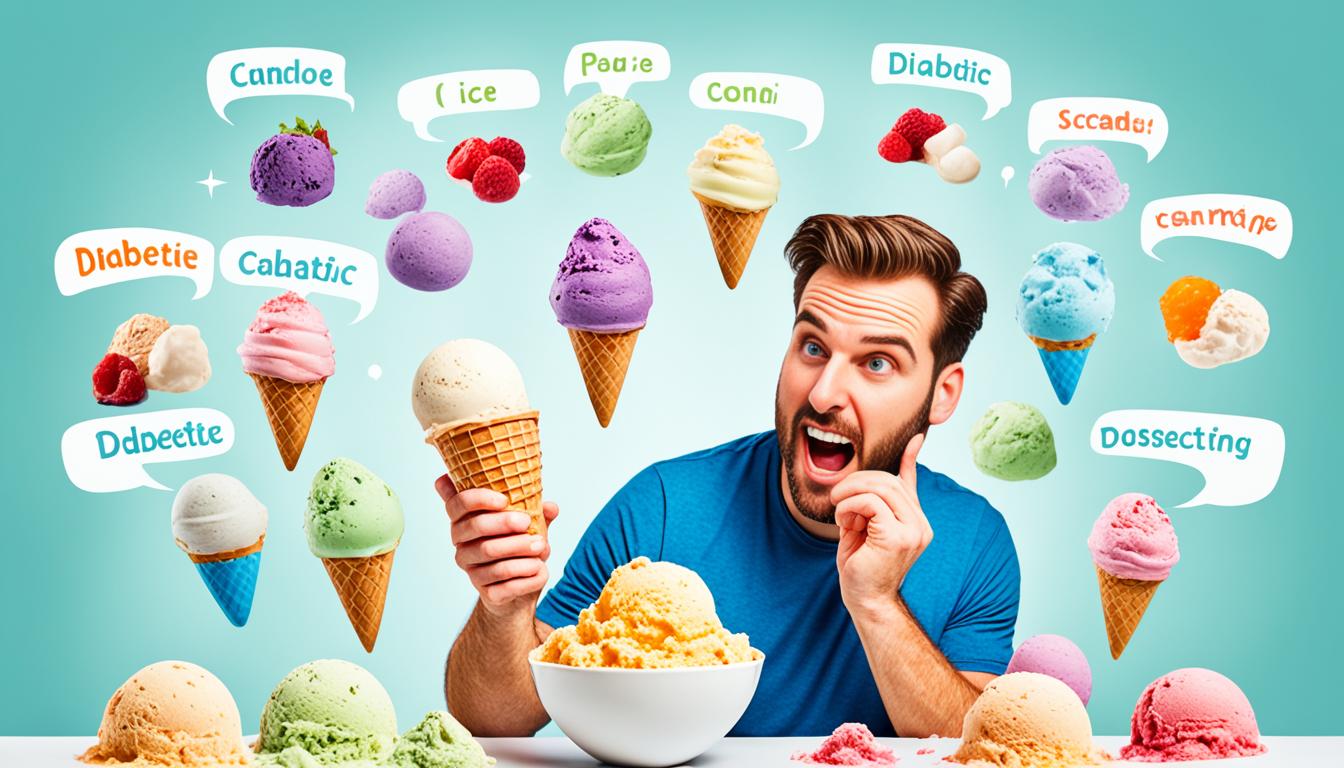You can easily incorporate ice cream into a balanced diet by practicing moderation and being mindful of serving sizes. Aim for about a ½ cup, or a single scoop, and pair it with nutrient-dense foods like fresh fruit or chia seeds. Choose smaller portions and enjoy ice cream as a treat, limiting indulgence to once or twice a week. This way, you can savor the experience while maintaining overall diet quality. There’s more to explore about balancing enjoyment and health!
Key Takeaways
- Enjoy ice cream in moderation, limiting servings to ½ cup or one average scoop to maintain balance in your diet.
- Pair ice cream with nutrient-dense foods like fruits or nuts to enhance its nutritional value and mitigate sugar and fat content.
- Choose smaller portion sizes, such as kiddie scoops, and opt for a dish instead of a cone to control indulgence.
- Incorporate ice cream into a balanced meal rather than consuming it as a standalone snack to support overall dietary quality.
- Explore non-dairy ice cream alternatives to meet dietary needs while still enjoying the treat in a balanced way.
Understanding the Role of Ice Cream in Nutrition

When you think about ice cream, it’s easy to see it as just a sweet treat, but it actually plays a unique role in nutrition.
A typical 1-cup serving of vanilla ice cream packs about 144.72 kcal, contributing 2.52 grams of protein, 7.92 grams of fat, and 16.99 grams of carbohydrates. Additionally, many ice cream recipes utilize natural sweeteners to enhance flavor without adding sugar. Ice cream can be enjoyed in moderation to maintain a balanced intake of calories while still indulging in a favorite dessert. Furthermore, frozen yogurt is often considered a healthier alternative with lower calories and added probiotics.
It also provides essential minerals like calcium, which is crucial for bone health, and vitamins A, C, D, and various B vitamins.
While ice cream isn’t a primary protein source, it does offer some essential amino acids.
Additionally, its carbohydrate and fat content makes ice cream a quick energy source, allowing you to enjoy a delicious treat while still benefiting your nutritional intake. Furthermore, the average ice cream consumption in the U.S. highlights its popularity as a dessert choice among many people.
Health Benefits of Moderate Ice Cream Consumption

Ice cream isn’t just a delightful treat; it can also offer surprising health benefits when enjoyed in moderation. For instance, it’s a good source of calcium, which supports bone strength, and potassium, which helps maintain healthy blood pressure levels. Additionally, temporary loss of taste can occur with excessive sugar consumption, which is minimized when enjoyed in moderation. Chia seeds, for example, are high in fiber, promoting satiety and can be added to smoothies that include ice cream for an extra health boost. Incorporating tropical fruits into smoothies can further enhance their nutritional profile and flavor. Moreover, the antioxidants present in celery juice provide additional health benefits that can complement your overall diet.
The protein in ice cream provides essential amino acids necessary for cell maintenance, while vitamins A and D boost vision and immune function. Plus, its calorie content can provide you with energy. Curiously, moderate consumption might even relate to a lower risk of obesity and type 2 diabetes. Enjoying ice cream can also bring joy, contributing positively to your mental well-being. Additionally, moderation is recommended to ensure that individuals with cholesterol concerns can still enjoy this sweet treat without adverse health effects.
Ice cream offers essential proteins and vitamins A and D, supporting cell maintenance, vision, and immune health.
Just remember to savor it in small portions for a balanced approach!
The Risks of Excessive Ice Cream Intake

While enjoying a scoop of ice cream can be a delightful experience, overindulging poses several health risks that shouldn’t be overlooked.
Regularly consuming ice cream can lead to blood sugar spikes, increasing your risk of insulin resistance and type 2 diabetes, especially if you’re already at risk. The high calorie and fat content can contribute to weight gain and obesity, creating metabolic issues over time. Additionally, solar charge controllers are designed to optimize energy harvest, much like our bodies benefit from managing sugar intake effectively. Moreover, the saturated fats in many ice creams raise “bad” cholesterol, heightening your chances of heart disease, which can be further aggravated by high sugar consumption that negatively impacts overall health. Excessive consumption of ice cream may also lead to increased intake of saturated fat, which is linked to heart disease. It’s important to remember that maintaining a balanced diet with adequate nutrition can help mitigate these risks.
Don’t forget about your dental health; ice cream’s sugar feeds oral bacteria, leading to cavities and tooth decay.
Furthermore, excessive consumption of sugar can lead to metabolic issues that further complicate overall health.
Moderation is key to enjoying ice cream without jeopardizing your health.
Balancing Ice Cream With Overall Diet Quality

To enjoy ice cream without compromising your health, it’s essential to balance it with the overall quality of your diet. Moderation is key—stick to a ½ cup serving, about one average scoop. Research suggests that moderate ice cream consumption may actually reduce the risk of insulin resistance and heart disease. Aim to include ice cream as part of a diet where 10% of your daily calories can be discretionary treats. Pair it with nutrient-dense foods to offset the sugary and fatty content. Remember, the overall quality of your diet plays an important role in mitigating any negative effects. Additionally, incorporating nutrient-dense foods can help enhance the health benefits while enjoying your treat. For example, including skincare products rich in antioxidants can support your overall well-being while indulging in a sweet treat. Moreover, focusing on a low carb diet can help maintain energy levels while enjoying occasional indulgences like ice cream. Using candle labels can be a fun way to personalize ice cream-related gifts, making them even more special.
Ice Cream’s Nutritional Content: What You Need to Know

Understanding ice cream’s nutritional content can help you make informed choices while enjoying this favorite treat.
A cup of vanilla ice cream packs about 144.72 calories, with 2.52 grams of protein and 7.92 grams of fat. It also contains around 16.99 grams of carbohydrates, including 15.28 grams of sugar. The creamy texture of ice cream can be reminiscent of cheesy polenta, making it a satisfying indulgence. Additionally, ice cream can be enjoyed within a balanced diet that emphasizes sustainable fashion choices, which encourage mindful consumption. Chia seeds, known for their high fiber content, can be a great addition to your diet to help balance out treats like ice cream. Moreover, incorporating whole fruits into your diet can provide additional nutrients that ice cream lacks, such as fiber and vitamins.
While it’s low in fiber, providing only 0.5 grams, ice cream does offer essential minerals like calcium (92.16 mg) and potassium (143.28 mg). Additionally, you’ll find vitamins A and D, along with small amounts of B vitamins. Incorporating low carb high protein breakfast ideas can provide a balanced approach to enjoying treats like ice cream in moderation.
Portion Control: Enjoying Ice Cream Responsibly

When you indulge in ice cream, practicing portion control is essential for enjoying it without overdoing it. A standard serving is about ½ cup, containing 100-130 calories and 14-20 grams of added sugar. Creative practice can also enhance your enjoyment of ice cream by inspiring unique flavor combinations.
To keep your intake in check, opt for smaller sizes, like a kiddie scoop, and choose a dish over a cone. Pairing ice cream with healthy toppings, like fresh fruit, enhances both nutrition and satisfaction.
Instead of treating it as a standalone snack, incorporate it into a balanced meal. Set limits on how often you indulge—once or twice a week is ideal. Additionally, consider pairing it with healthy toppings like fruits to increase the nutritional value of your treat.
Non-Dairy Ice Cream Alternatives for Dietary Needs

Have you ever wondered how you can enjoy ice cream while adhering to dietary restrictions? Non-dairy ice cream alternatives make it possible!
You can savor creamy oat milk-based options from brands like Oatly or indulge in rich cashew milk flavors from So Delicious. If you prefer a lighter texture, almond milk ice creams might be your best bet, though they can be thinner.
For a protein boost, try soy milk varieties, while coconut milk offers a decadent richness. Remember, though, that non-dairy options may lack some vitamins found in traditional ice cream and can have added sugars.
Explore unique flavors and find the perfect balance between enjoyment and your dietary needs!
The Impact of Consumer Trends on Ice Cream Choices

As consumer tastes evolve, the ice cream market is experiencing a dynamic shift influenced by various trends.
You might notice that many ice cream lovers, especially younger ones, prioritize indulgence over health, craving unique flavors and premium products. Nostalgia plays a role too; familiar flavors with a twist attract your attention.
Experiential consumption is key; it’s not just about the ice cream, but the joy it brings. Additionally, the rise of health-conscious consumers has led brands to offer lower sugar and high-protein options, alongside vegan choices.
Global culinary influences expand your flavor horizons, while sustainability concerns encourage you to seek eco-friendly brands.
All these trends shape your ice cream choices today, making each scoop a reflection of your preferences.
Exploring the Science Behind Ice Cream and Health

With the evolving landscape of ice cream preferences shaped by consumer trends, understanding the science behind ice cream and health is essential.
A cup of vanilla ice cream packs about 145 calories, with a mix of fat, carbohydrates, and a small amount of protein. It’s also a source of minerals like calcium and potassium, and contains some vitamins, albeit in limited quantities.
Moderate consumption may even reduce the risk of insulin resistance and heart disease. However, its high sugar and fat content can lead to health issues if overindulged.
The unique structure of ice cream allows for health-promoting ingredients, making it a tasty treat that can fit into a balanced diet when enjoyed mindfully.
Tips for Incorporating Ice Cream Into a Balanced Diet

Incorporating ice cream into a balanced diet can be enjoyable and satisfying when approached mindfully. Choose ice cream in moderation, keeping portions to about ½ cup.
Opt for varieties with lower added sugars and saturated fats, like authentic gelato or slow-churned options. Enhance your treat by adding fresh fruits, nuts, or a scoop of peanut butter for extra nutrients and protein.
If you prefer homemade, use frozen fruits or Greek yogurt as a base, and flavor with spices instead of sugar.
Always pay attention to your hunger cues and savor each bite. By balancing your ice cream enjoyment with mindful choices, you can indulge without compromising your health goals.
Frequently Asked Questions
Can Ice Cream Be Part of a Weight Loss Plan?
Yes, ice cream can be part of a weight loss plan if you manage portion sizes and choose wisely.
You can enjoy a scoop while keeping track of your overall calorie intake. Opt for lower-calorie or high-protein versions to satisfy your cravings without derailing your goals.
How Does Ice Cream Affect Mental Health?
Eating ice cream is like a party for your brain! When you indulge, your serotonin levels spike, lifting your mood and reducing stress.
The creamy texture and delightful flavor activate reward centers in your brain, releasing dopamine that brings joy. Plus, sharing a scoop with friends amplifies the happiness.
Just remember, while it can bring temporary bliss, balance is key for lasting mental well-being. Enjoy it, but don’t go overboard!
What Is the Best Time to Eat Ice Cream?
The best time to eat ice cream is right after a meal.
Doing this can help slow down sugar absorption due to the other nutrients you’ve consumed, minimizing blood sugar spikes.
If you’re craving it between meals, be cautious, as that might lead to a rapid rise in sugar levels.
Enjoying a small portion after a light meal allows you to savor the treat while keeping your diet in check.
Are There Any Ice Cream Brands With Lower Sugar Content?
You might think all ice cream is loaded with sugar, but that’s not the case!
Brands like Rebel Creamery offer keto-friendly options with zero grams of sugar, while Braum’s features no-added-sugar varieties.
Arctic Zero specializes in low-calorie, low-sugar desserts, and Edy’s Slow Churned line provides tasty no-sugar-added choices.
With so many options available, you can satisfy your sweet tooth without worrying about excess sugar in your diet.
Can Children Consume Ice Cream Regularly?
You can let children enjoy ice cream, but it’s best to keep it occasional.
Regular consumption can lead to excessive sugar intake, which might cause health issues like weight gain and dental problems.
Instead, consider ice cream as a treat rather than a daily snack.
Moderation is key, so aim for smaller portions and balance it with nutritious meals throughout the day.
This way, your kids can enjoy their favorite dessert without compromising their health.
Conclusion
Incorporating ice cream into your balanced diet is like adding sprinkles to a cupcake—it makes something good even better! Moderation is key, so think of ice cream as a delightful treat that enhances your meals rather than a daily staple. Remember, it’s all about balance. So, next time you enjoy a scoop, savor it as a sweet moment amidst your healthy choices, bringing joy without compromising your well-being. Enjoy the delicious journey!










